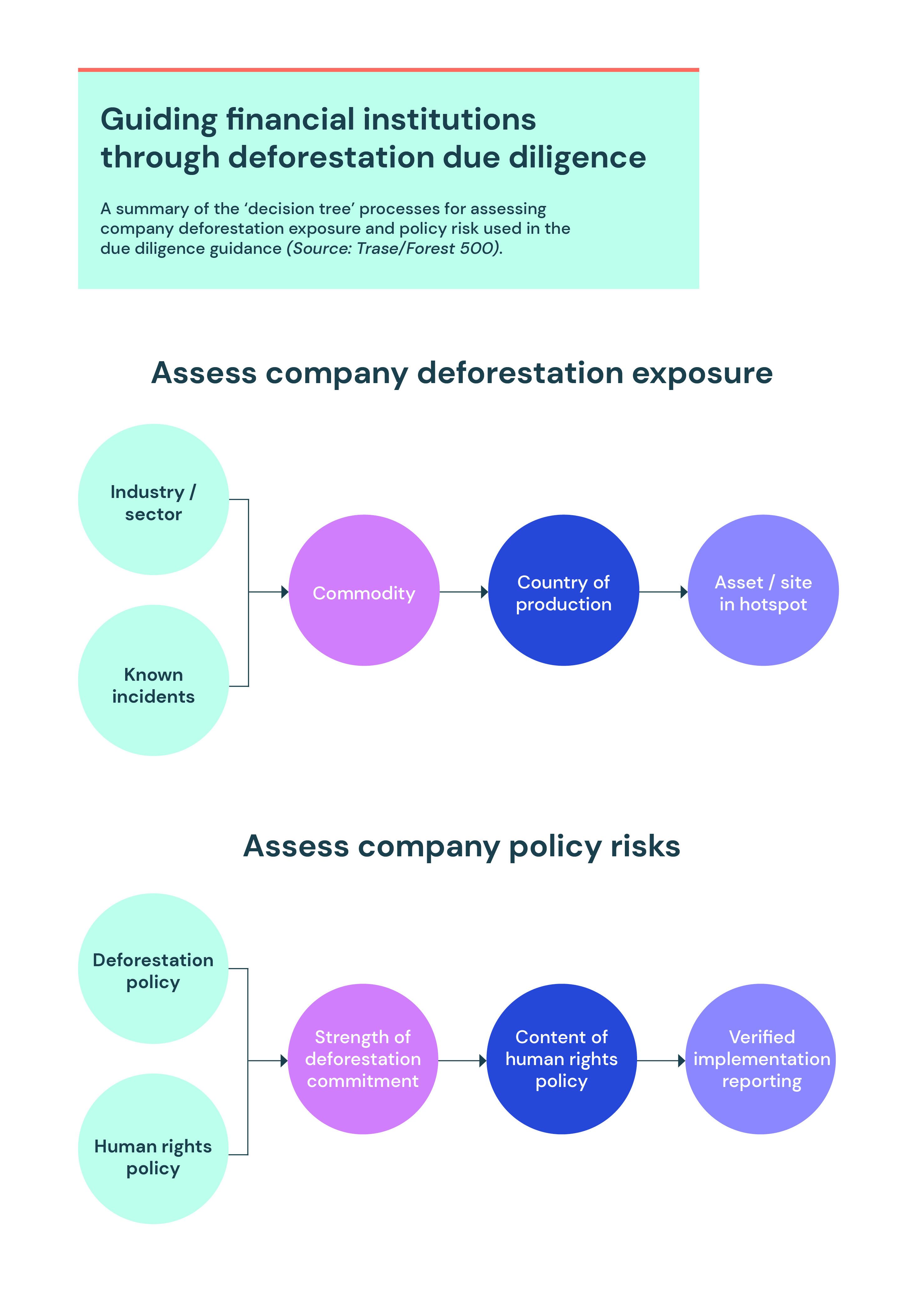
New guidance helps financial institutions grapple with deforestation due diligence
New guidance on deforestation due diligence by Global Canopy, Neural Alpha and SEI helps banks and investors identify, prevent and mitigate the risks of deforestation, conversion and associated human rights abuse in financial portfolios.
Read in other languages:
Português brasileiroDeforestation is of increasing concern for banks and investors with incoming EU deforestation regulations and existing corporate sustainability due diligence requirements driving interest in nature-related disclosures and voluntary commitments by a number of financial institutions to eliminate commodity-driven deforestation from their portfolios.
Nevertheless, much greater progress needs to be made as around 60% of the 150 financial institutions assessed in Global Canopy’s latest Forest 500 report have no deforestation policies for any commodities. Gaps in guidance and data are often cited as barriers to action on deforestation by the finance sector.
New guidance released in April by Global Canopy, Neural Alpha and SEI aims to fill that gap by showing financial institutions how to implement due diligence processes to identify, prevent and mitigate the risks of deforestation, conversion and associated human rights abuse in financial portfolios. It builds on initiatives such as the Finance Sector Roadmap to eliminate deforestation and associated human rights abuses from their portfolio by 2025.
Focus on higher risk clients and holdings
Financial institutions that are unable to identify and manage deforestation exposure in their portfolios are at risk of reputational and financial impacts. Deforestation risk arises when the products and commodities that companies produce or source are associated with potential deforestation and they do not have adequate policies and processes in place to manage that exposure.
The due diligence guidance sets out a ‘decision tree’ process to assess company exposure and policy risks using a transparent and flexible methodology that uses increasingly granular information where it is needed and available. For example, in cases where a client or holding operates in an industry that does not produce or source forest-risk commodities, a low deforestation risk flag can be assigned, and users can then focus efforts on higher risk clients or holdings.
The decision process flags higher exposure risk where forest-risk commodities are produced or sourced in regions which are associated with deforestation, conversion and associated human rights abuses, particularly where clients or holdings are unable to demonstrate that they are not exposed to deforestation hotspots.
Companies operating in exposed industries should, as a minimum, have policies on deforestation and human rights. Where these are absent, the policy risk decision process assigns a high policy risk flag, indicating a key area for follow-up action with the client or holding.

The guidance points users to existing datasets that focus on exposure and policy risks posed by the most significant supply chain actors. The Trase Finance due diligence dataset drills down into traders’ sourcing patterns at subnational levels for selected high-risk commodities and biomes, while Forest 500 identifies companies and financial institutions with the greatest exposure to tropical deforestation risk and assesses the strength and implementation of their deforestation and human rights commitments.
Prioritise action towards deforestation-free financial portfolios
The due diligence guidance helps financial institutions identify gaps in supply chain policies and practices and decide on appropriate mitigating actions to propose when engaging clients or holdings during pre- or post-financing phases.
Financial institutions have significant leverage in driving change through engagement with clients and holdings. Forest 500 found that over US$6 trillion was invested into companies most at risk of driving deforestation. Yet, a review for the first annual Deforestation Action Tracker found that only 41% of financial institutions with a deforestation policy also had an engagement process in place for non-compliant clients/holdings, highlighting an area of significant opportunity.
The due diligence guidance includes best practice recommendations on specific actions that financial institutions can take as equity and debt holders, not only through engagement and publicly communicating their expectations to clients and holdings, but also ways they can escalate stewardship activities through the exercise of ownership rights (for equity holders) or contractual requirements (for lenders and debt holders) towards stronger implementation of deforestation commitments.
The new guidance on deforestation due diligence provides common ground for the finance sector and its stakeholders to work individually and collectively towards deforestation-free portfolios. We invite prospective users to contact us at guidance@globalcanopy.org for support and collaboration.
Download guidance (registration required): Due Diligence towards deforestation-free finance: Guidance for financial institutions









